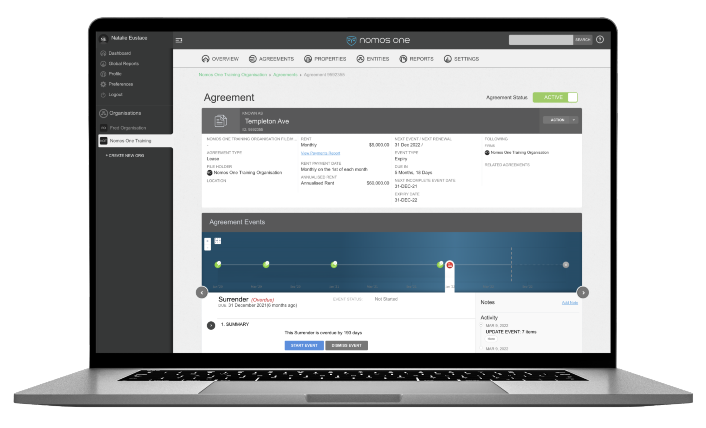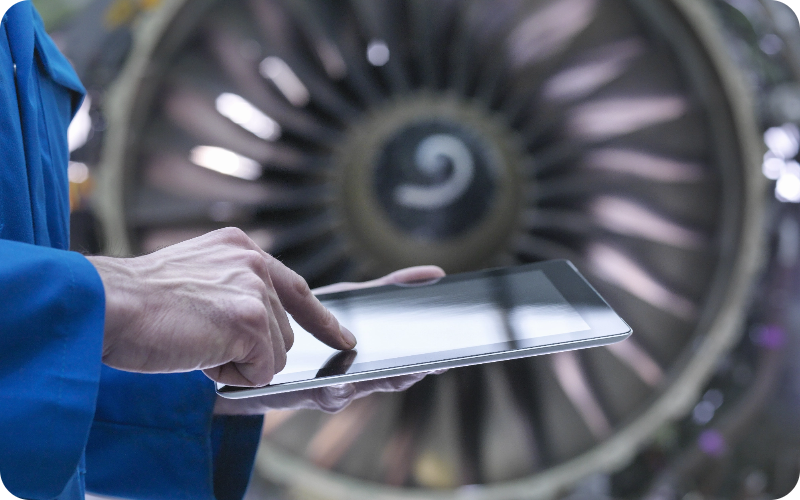As discussed in our previous blog post, in the aviation sector, operational precision isn’t limited to the tarmac or the skies - it is just as critical behind the scenes, especially in lease and contract management. Aircraft leasing, terminal space agreements, and aeronautical rights are not only central to aviation business models but are also notoriously complex to manage. Yet, despite this complexity, many aviation companies still rely on manual processes, such as spreadsheets, disconnected systems, and email trails, to track and manage leases. This approach not only consumes time and resources, but also exposes businesses to costly errors, compliance risks, and missed opportunities for optimisation. In today’s environment, where fleets are often global, assets are widely distributed, and IFRS 16 requirements have raised the stakes for accurate lease accounting, aviation companies need to move beyond manual workflows. In this article, we look at how lease automation transforms operational efficiency in aviation, reducing risk, saving time, and helping teams focus on strategy rather than administration.

Hidden costs of manual lease management
Manual lease tracking might seem manageable at first, especially for small or legacy fleets, but it quickly becomes a liability as businesses grow or diversify. In aviation, lease portfolios are rarely straightforward. You’re not just managing aircraft, but also engines, hangars, terminal space, land agreements, and other infrastructure-related leases. Each comes with its own set of payment terms, renewal clauses, indexation rules, and reporting obligations. Let’s not start with the higher risk for modifications due to the likes of changes to the useful life of the asset and changes to the underlying asset which may increase or decrease the scope. Without automation, this complexity increases the risk of data entry errors, overlooked milestones, and inconsistent reporting. Missed lease transition deadlines or misapplied indexation can result in financial losses or regulatory breaches. Moreover, manually reconciling lease data for monthly reporting or audits places a heavy burden on finance and operations teams, particularly when working across time zones and with decentralised asset portfolios. These inefficiencies not only strain internal resources but can delay decision-making and hinder responsiveness. As aviation businesses look to streamline operations and reduce overhead, digitising lease workflows is becoming essential.
How automation unlocks efficiency and accuracy
Automated lease management and lease accounting platforms like Nomos One help aviation companies replace fragmented workflows with a centralised, cloud-based system that handles lease data with speed and precision. By removing reliance on spreadsheets or manual reminders, automation dramatically reduces the potential for human error. One of the most immediate benefits is improved audit readiness. With lease data securely stored, calculations automatically generated, and changes fully tracked, businesses can provide auditors with a clear, defensible record. Instead of scrambling to compile supporting documents or reconcile mismatched figures, teams can respond with confidence and speed. Automation also creates efficiencies across daily operations. Lease start and end dates, renewal options, CPI adjustments, and critical clauses can be tracked and flagged automatically. Custom alerts ensure that deadlines aren’t missed, and lease events can be handled proactively rather than reactively. For accounting teams, automated journal entries and IFRS 16 calculations free up time previously spent on tedious reconciliation work. Ultimately, automation gives aviation businesses greater control, transparency, and efficiency, freeing up skilled personnel to focus on higher-value work such as strategic lease negotiations, forecasting, and compliance planning.

From transition management to asset tracking
Lease automation doesn’t just streamline accounting; it simplifies real-world operational challenges in aviation. For example, managing lease transitions - whether between fleet upgrades or terminal tenancy changes - can involve multiple teams, locations, and milestones. An automated system ensures that key steps are tracked, dependencies are managed, and responsibilities are clear. Renewal alerts are another area where automation proves invaluable. Lease agreements often include extension windows or notice periods that, if missed, can result in financial penalties or operational disruption. Nomos One can flag these windows well in advance, giving teams time to assess, negotiate, or plan transitions accordingly. Asset tracking also becomes easier with digital tools. In an industry where leased assets may be scattered across airports, maintenance facilities, and regions, automation enables centralised visibility. With Nomos One, teams can link documents, payments, and operational data to each asset, which helps ensure accurate reporting and simplified lifecycle management, whether you're tracking an aircraft, an engine, or a hangar space lease.
Benefits of cloud-based tools in a distributed industry
Aviation businesses are inherently decentralised. Aircraft fleets, terminals, and teams are often based across multiple countries or continents. This makes cloud-based platforms a necessity, rather than a convenience. With a cloud-based solution like Nomos One, stakeholders across departments and regions can access the same real-time lease data, collaborate on decisions, and achieve consistent reporting from anywhere in the world. Version control issues, outdated files, and email-based handovers become a thing of the past. Whether you’re managing leases from a head office, a regional maintenance hub, or on the move, your data is secure, accessible, and up to date. Cloud-based tools also support stronger disaster recovery, role-based access controls, and seamless updates to reflect new compliance rules or reporting standards, all without needing to maintain on-premise infrastructure.

Whether you're scaling operations, navigating compliance requirements, or simply trying to do more with fewer resources, digitising your lease workflows can unlock significant value. Nomos One is built to support aviation teams with complex, multi-asset lease portfolios. From IFRS 16 compliance to operational efficiency, our platform helps you move faster, manage risk better, and work smarter. See how Nomos One helps aviation teams move faster with fewer errors - book a demo today!

























